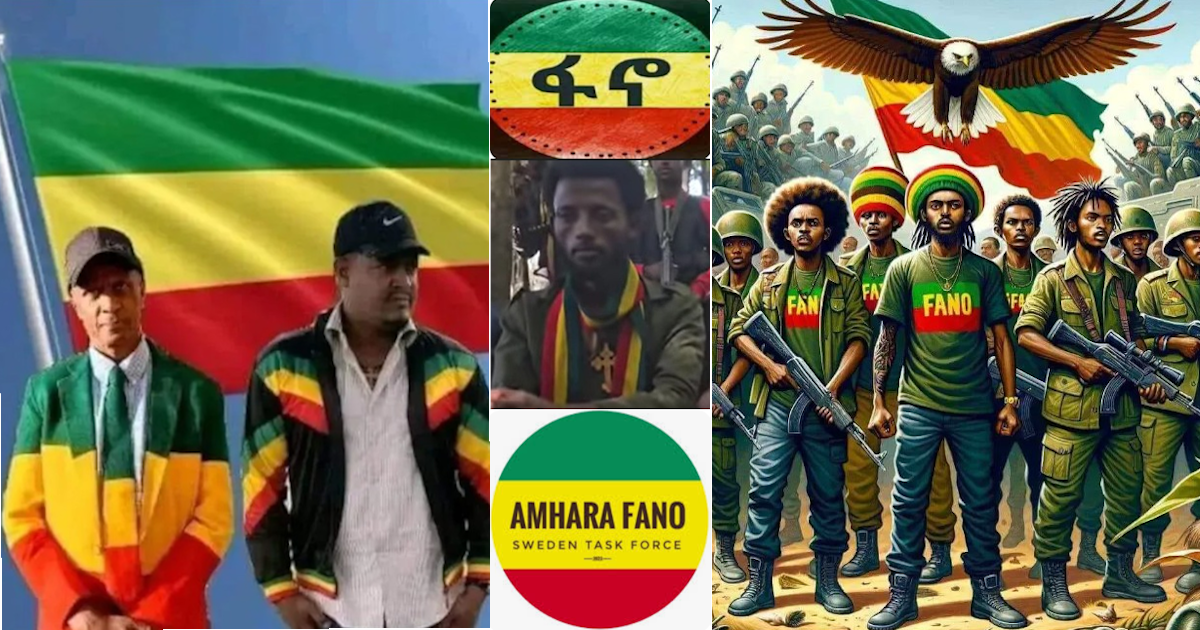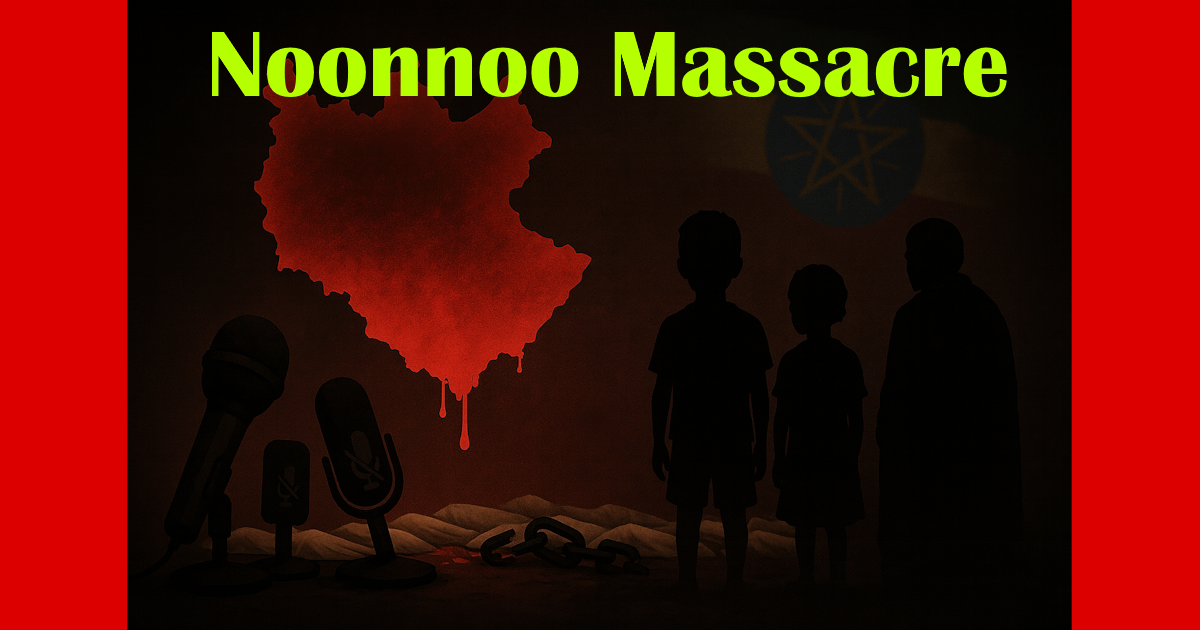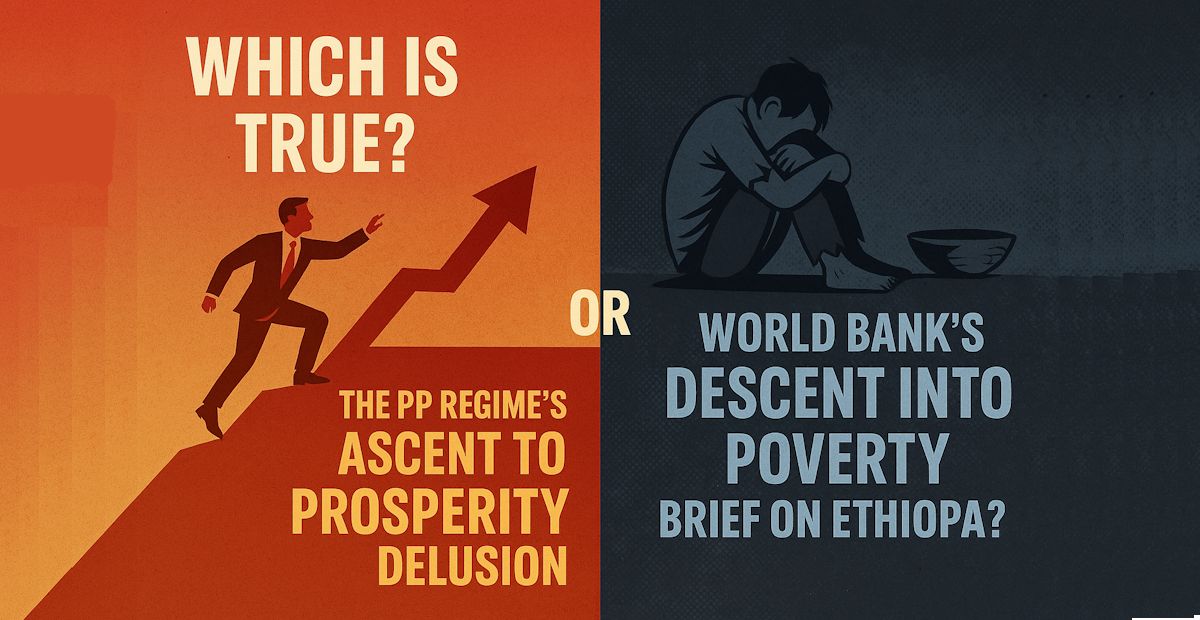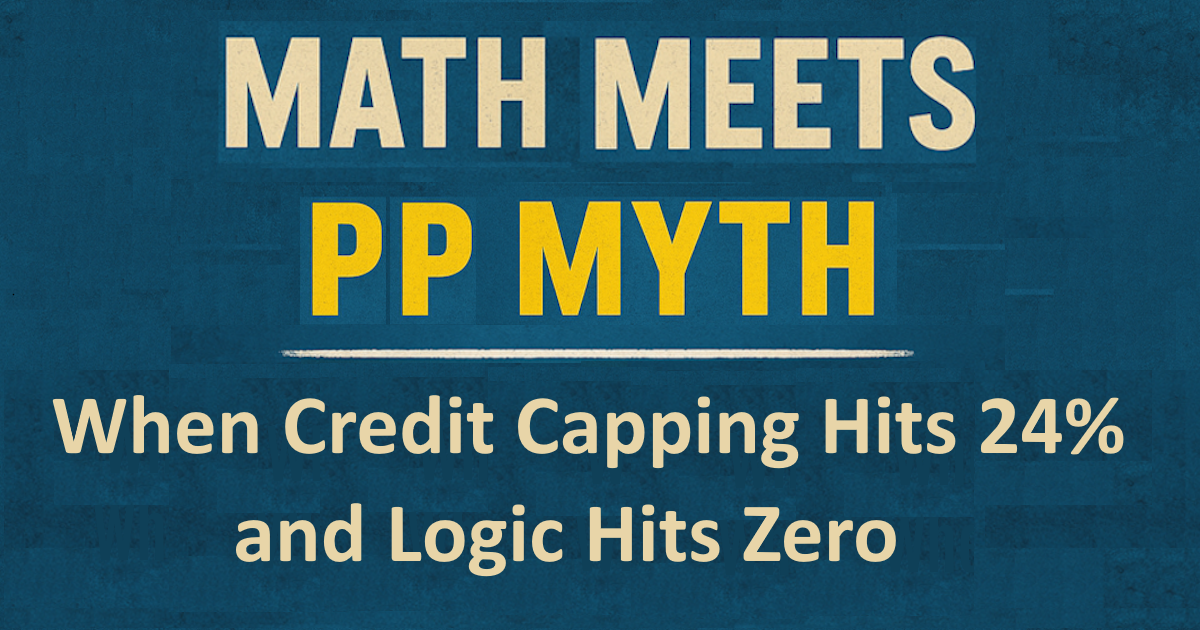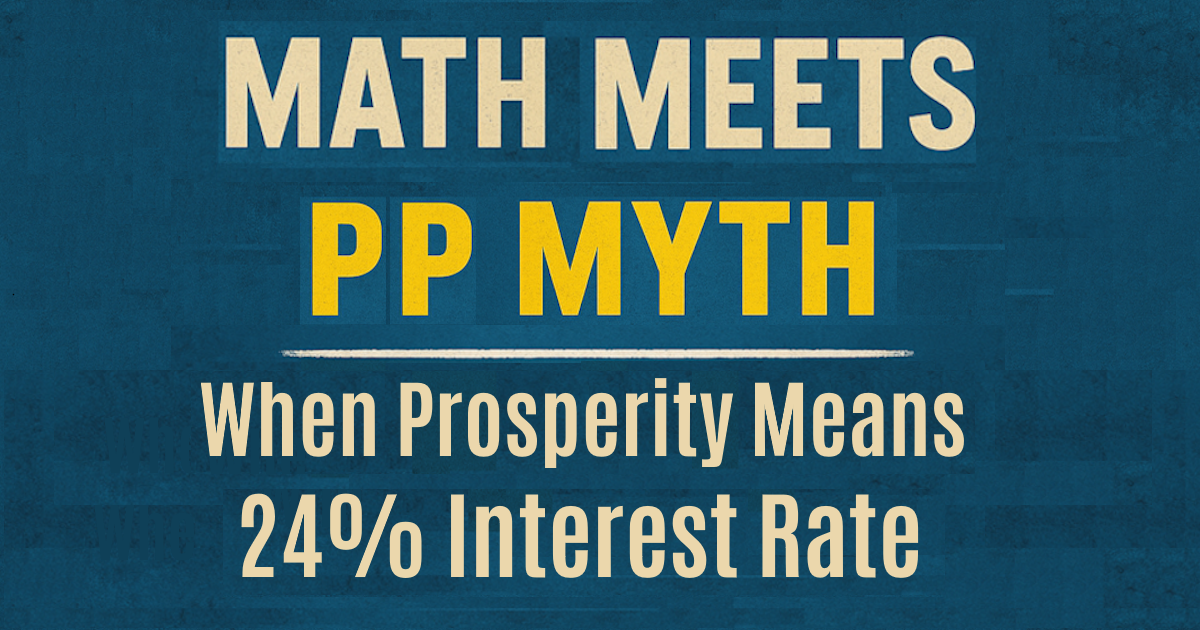The Systematic Dispossession of Oromia: Language Status Denied, Lands Mythologized and Engineered, Names Rewritten, and a Mountain Nearly Claimed
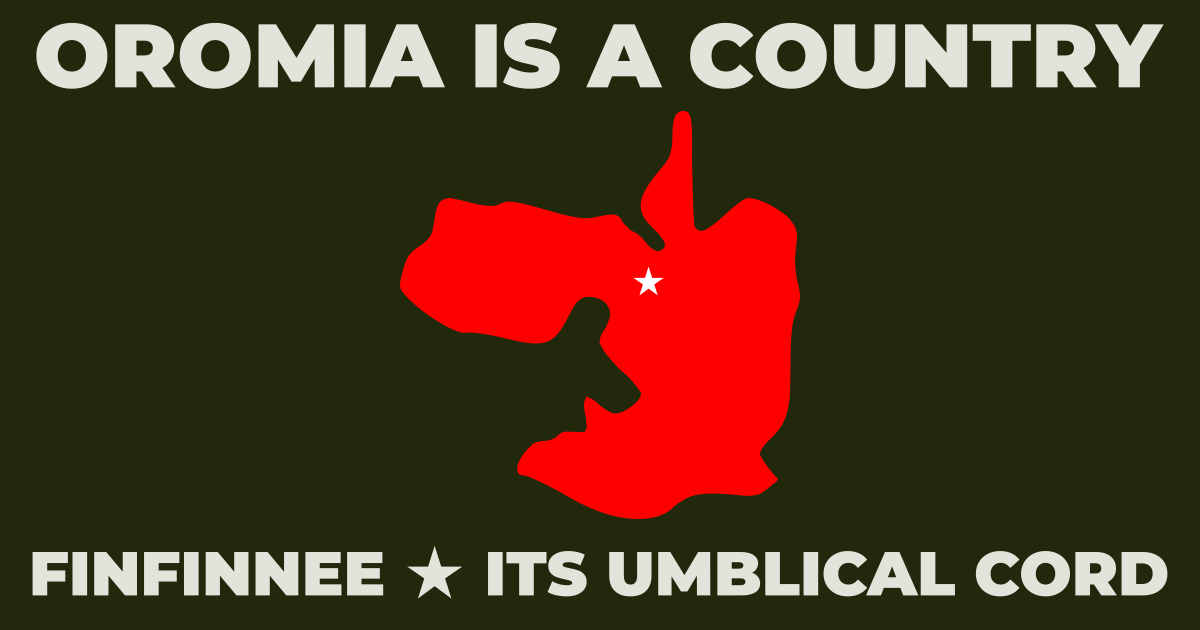
An Article by Invitation
Introduction
In the age of satellites, algorithms, and global awareness, one might assume that cultural denial has no place left to hide. And yet, Ethiopia—a multinational entity whose sociopolitical structure still bears the hallmarks of an unreconciled empire—continues to find creative ways to deny the Oromo people what is clearly, obviously, and unarguably theirs.
For the closely observant, understanding the systematic dispossession of Oromia requires no sophisticated research, for the signs are glaringly obvious—even to visitors. From language marginalization to myth-driven land claims and digitally manipulated place names, the patterns of exclusion and appropriation are visible across physical and virtual landscapes alike. The machinery of dispossession has simply evolved with the times, shifting from imperial decree to metadata edits, from overt conquest to strategic invisibilization.
Consider the simple fact that Afan Oromo, the language of the empire’s largest ethnic group, still lacks federal working language status. Or the more surreal but no less sinister attempt to spiritually annex Mount Erer, a natural gem of Oromia, by fabricating myths of Adam’s descent from Paradise. Or the sly digital games played on global tech platforms, where Oromia’s restored place names are quietly swapped back to their imperial versions—one edit at a time.
This is not a random series of oversights. It is a pattern—a systematic sabotage—waged through legislation, disinformation, clerical maneuvering, and digital manipulation. The tools may be modern, but the mentality is unmistakably imperial.
In this article, we explore how Ethiopia’s refusal to grant Oromo entitlements is matched only by the absurdity of its attempts to steal, overwrite, and reclaim what it once tried to erase. From language to landscape to identity itself, the struggle for recognition continues—not just in parliament halls, but in app stores, place and weather maps, and myths.
1. The Language of the Majority – Federal Status Still Denied
Afan Oromo is not just a language; it is the living cultural expression of the largest nation within Ethiopia. Spoken by at least 40 to 45% and arguably by more of the population, it is a language of commerce, identity, governance, and daily life across Oromia and beyond. And yet, over a century into its supposed modern statehood and decades into so-called federalism, Afan Oromo remains excluded from the list of federal working languages. In a truly representative and democratic system, this omission would be unthinkable. In Ethiopia, it has been stubbornly normalized.
The denial is not merely symbolic—it has far-reaching consequences. Oromo children grow up learning in Afan Oromo but must switch to Amharic or English to access federal services. Federal institutions operate in Amharic, rendering Afan Oromo-speaking citizens second-class in the very state they help sustain. This is not oversight; it is institutional exclusion, baked into the structures of power.
While the Ethiopian constitution vaguely promises language equality and cultural self-expression, implementation tells a different story. Federalism was meant to give space for linguistic and cultural autonomy, but in practice, it became a hierarchical framework, where certain languages are privileged while others—like Afan Oromo—are perpetually relegated to the regional margin.
Attempts to normalize this injustice often hide behind bureaucratic excuses: “it’s technically complicated,” or “the transition needs time.” But these deflections ring hollow since Afan Oromo has already found its place in system-level applications and platforms. Why is it that the majority language still waits for recognition?
The answer points not to complexity, but to politics. The refusal to elevate Afan Oromo to its rightful federal status is an act of cultural containment—a way of resisting the full legitimacy of Oromo identity within the Ethiopian framework. It reflects a fear: that giving Afan Oromo its due might empower a nation long marginalized, and disrupt the delicate balance of power that favors a historic elite.
Afan Oromo stands as an illustrative case, but it is far from the only withheld entitlement. Dozens more—ranging from border claims to city/town status, representation to infrastructure equity—follow the same pattern: clear, deserved, and yet delayed or denied. The injustice becomes even more evident when viewed alongside the absurd lengths taken to assert symbolic dominance in other areas, such as land and historical narrative, as we shall explore in the sections that follow.
2. Myths For “Sacred” Land Appropriations
When power fails to dominate through law or legitimacy, it often turns to mythology. Ethiopia’s landscape is dotted with churches, shrines, and “holy” sites—many of which sprouted not from spiritual revelation, but from calculated appropriation. At the heart of this phenomenon lies a long campaign: the strategic acquisition of land under the guise of faith, almost always in Oromia with myth of saints choosing to land from the skies for love of a given spot, and almost always in places of beauty, fertility, or symbolic power.
Saints with a GPS for Oromia
There is a strange coincidence in the celestial GPS of Ethiopian Orthodox saints: they always seem to “land” on the most scenic and valuable parts of Oromia, especially in central regions near the capital. In what can only be described as a desperate spiritual land grab, the Ethiopian Orthodox Church—long seen as a cultural-political wing of Amhara nationalism—got into the habit of declaring that a given piece of land is claimed by Saint This or Saint That. Hills, riverbanks, groves, and hilltops—many of which are prime urban real estate today—have been quietly turned into permanent religious compounds through miraculous stories and emotive symbolism.
From the capital and beyond up and down the region, countless parcels of land were acquired not by law or open negotiation, but by mythology as policy. Once a shrine is established, it becomes untouchable. The state does not question the Church. Communities lose access. Future development is frozen. And Oromia’s landscape becomes spiritually gentrified.
What is especially troubling is how these sacred narratives often erase or overwrite existing Oromo cultural and spiritual ties to the land. Indigenous Oromo belief systems—like Waaqeffannaa—are rarely acknowledged, let alone protected. Instead, a single religious framework, tightly linked to one ethnic elite, becomes the authorized story of the land.
How about Attempting to Steal a Mountain?
Perhaps the most absurd example is the myth surrounding Mount Erer, about 15 km north of Bishoftu, a stunning natural landmark near the Oromia–Amhara border. About five years ago, a video surfaced on YouTube for none other than the usual ploy—this time to appropriate a gigantic landmark overlooking another region, rather than just a plot of land for a church and business around it. If anyone wants to challenge that this video production has some genuine angle of academic or historical value, let them present. This video declared that “Adam descended from Heaven at Mount Erer” after being banished from Paradise and the purpose is all too transparent.
The story was not just invented—it was deployed. Behind this concocted myth lies a strategic plan: manufacture spiritual legitimacy, draw spontaneous pilgrimage, and slowly build a narrative that detaches the mountain from its Oromo identity and hands it to the Church. Once enough believers walk the trail, plant the crosses, and build the shrines, the logic becomes irresistible: Who could oppose what the saints have already claimed?
But the problem—though not materialized for Erer—is not limited to Erer. The pattern has been unfolding for over a century.
3. Modern Political Engineering – The Subtle Front of Dispossession
Where old mythology is increasingly untenable and no longer as effective, modern politics has grown more sophisticated—with motives that are subtle, calculated, and difficult to challenge on the surface. One of the most telling examples of this new phase of dispossession is the infamous “Master Plan” that ignited the 2014–2018 Oromo resistance.
While it may sound inconceivable—perhaps even absurd—to imagine someone using urban expansion to redefine regional boundaries, that was precisely the underlying danger of the plan to extend Finfinnee’s (aka Addis Ababa) administrative reach deep into outer extremities. To draw an analogy: it would be like using the expansion of Las Vegas as a rationale to encroach into California—an unnecessary and unthinkable move in any genuinely stable federal system. And yet, in Ethiopia’s fractured federalism, such ambitions were very real.
The Finfinnee “Master Plan” was framed in technocratic language—urban development, infrastructure, growth—but the ulterior motive was barely concealed. The long-term intention was to detach Finfinnee from its Oromo cultural and territorial roots and tether it administratively and demographically to the Amhara region. In effect, to make Finfinnee non-Oromo—politically, symbolically, and eventually, demographically.
Though the plan was officially cancelled after massive public outcry and a wave of sacrifices by over 5000 Oromo youths (the Qeerroo & Qarree), the underlying ideology has not been buried. The dream of a Finfinnee that stands apart from Oromia—untouched by its claims, yet absorbing its land and resources—still lingers in extremist narratives and informal planning circles.
It is yet another layer in the systematic dispossession of Oromia: not through saints this time, but through city planning. Not by crosses planted in soil, but by zoning lines drawn in conference rooms.
4. Digital Erasure – Tech Platforms as New Frontiers of Suppression
This happened during the EPRDF regime about a decade ago but is worthy of mentioning as the war of identity is ongoing and traces back over a century with educational marginalization and systemic discrimination. The Digital era just made it more and more apparent.
In today’s interconnected world, digital visibility is cultural survival. Maps, language settings, app store metadata, and geotags are not just technological conveniences—they are part of a new global infrastructure of legitimacy. And yet, even in this realm, Oromo identity continues to be assaulted, marginalized and manipulated.
Several years ago, the suppression of Afan Oromo—despite its official designation as “om” under the ISO 639-1 standard—made headlines in the tech world, especially as other Ethiopian languages like Amharic, Tigrinya, Somali, and Afar were all represented. It was indeed astonishing that the language spoken by the majority in the empire was excluded from app stores. Yet, after reading this piece, one can hardly find it surprising at all.
Microsoft, to its credit, responded with understanding and provided workarounds for their app store with their support team showing genuine interest and sympathy. But their platform could only act on official recognitions and inputs it received—likely from the Ethiopian EPRDF government itself.
That is where the finger must be pointed. If a government fails to advocate for the language of its majority population in international standards bodies and platform negotiations, is it an oversight—or a policy of passive sabotage? The omission of “om” may seem minor in a drop-down menu, but for app developers, content creators, and digital users across Oromia and beyond, it is another wall—another reminder that Afan Oromo’s legitimacy is always conditional, always deferred.
5. Resurrecting the Past – The Futile Attempt to Reclaim Imperial-Era Names
When systems of domination lose their grip on the present, they often retreat into the past—seeking legitimacy not in justice or progress, but in nostalgia. Ethiopia’s long history of forced assimilation left behind a residue of renamed towns, cities, and regions—an archive of imperial ambition carved onto the geography of Oromia. After the fall of the Derg and the advent of regional autonomy in the 1990s, Oromo communities began reclaiming their true place names, restoring centuries-old identities that had been forcibly suppressed.
But today, in the digital age, those names are under quiet attack once again—not by armies or decrees, but by keyboards and databases.
Google and Weather Maps and the Ghosts of Empire
From Google Maps to weather apps to GPS-enabled services, place names serve as both data and identity. A town’s name is not merely a label—it signifies cultural ownership, historical memory, and communal pride.
Yet today, some of these Oromo place names mysteriously revert—often only temporarily, often without attribution. The pattern suggests a coordinated digital vandalism effort by ideological actors, possibly linked to individuals with editing privileges or institutional access. The goal is psychological as much as it is territorial: to rewrite Oromia’s story, to weaken its sense of place, and to resurrect a symbolic geography that serves a lost empire’s narrative.
The effect is deeply unsettling. It’s as if the past is reaching through the screen, trying to reclaim a narrative that was legally and culturally rejected. And while the tactic is low-key, its impact is not. These digital reversions sow confusion, especially for youth, tourists, or international observers who rely on online information. They blur the boundaries of Oromo identity, casting doubt on what is official, what is original, and what is right.
Reclaiming vs. Rescinding
What’s happening here is not just about naming. It’s about rescinding the gains of recognition. The restored names—won through decades of struggle—are being chipped away not by law, but by a digital sleight of hand. It’s not a constitutional reversal, but a crowdsourced regression. It gives plausible deniability to those involved (“Just a correction,” “based on an old map”) while reactivating the psychological power of imperial geography.
What makes this tactic both cowardly and absurd is that place names are official and traceable. The names in Oromia today are not the subject of debate; they are constitutionally and administratively recognized. Changing them on digital platforms should be treated as falsification, digital vandalism, if you will. Yet enforcement is lacking, and the slow erosion of identity continues under the radar.
6. Historical Revisionism – Academic Absurdities and Manufactured Legitimacy
Dispossession of Oromia has not been limited to mythology, political manipulation, or digital vandalism. It has reached even the ostensibly neutral domain of academia—one of the most influential and respected platforms of knowledge production. Alarmingly, academic institutions and scholars have also become tools in the broader project of historical erasure and legitimacy-building by Amhara elites.
In a desperate bid to reclaim spaces that are indisputably Oromo, some have turned to historical revisionism masked as academic inquiry. The infamous attempt to tether Finfinnee to Amhara identity through the dubious historical narrative of “Barara” stands out as a prime example. Dr. Habtamu Tegegne, a faculty member at Rutgers University, authored a book titled Barara: Addis Ababa’s Predecessor – Foundation, Growth, Destruction, and Rebirth (1400–1887), which makes a strained case for a historical Amhara presence that would somehow predate and delegitimize Oromo claims to the capital.
This is not mere scholarly curiosity—it is a strategic distortion, aimed at undermining Oromo ownership of Finfinnee and aligning with broader efforts such as city expansion plans and digital disinformation campaigns. It is as absurd and opportunistic as the attempt, to tether Finfinnee to Amhara region through urban development, to “steal” Mount Erer through mythology, or to digitally revert Oromo cities to imperial-era names. When the myth fails and political engineering is questioned, a fallback strategy appears to be: invent history.
The timing is no coincidence. As Oromo assertion grew after 1991—assertion of culture, language, identity, and territorial integrity—Amhara elites began to interpret this not as a path to pluralism, but as an existential threat. The logic of zero-sum politics took over: Oromo empowerment was framed as Amhara disempowerment. Instead of seeking coexistence, a campaign was launched to retake what had never belonged to them. It unfolded as though every actor had received a marching order—striking Oromia from all angles in a manner that appeared meticulously strategic, as if orchestrated by a well-coordinated central command.
This historical revisionism is not isolated. It is amplified through diaspora media, pro-Amhara intellectual circles, and coordinated messaging on digital platforms. Even more troubling is that some of these revisionist narratives are being hosted, published, or echoed by Western academic institutions, lending them a veneer of legitimacy.
Modern academia, which for decades marginalized Oromos by rendering them invisible or relegating them to footnotes, now risks becoming the intellectual wing of a broader cultural dispossession campaign. And the focal point of this battle remains Finfinnee—because it represents not only history, but also commerce, power, and visibility.
From mythical saints to speculative maps, from politicized planning to questionable scholarship—the war on Oromo identity continues on every front. Even institutions designed for truth-seeking are not immune.
7. The Digital Spillover – Silencing Oromo Voices Beyond Borders
For the sake of completeness, it is worth highlighting a final layer in the systematic dispossession of Oromia—one that transcends geography and operates in the boundless space of the internet. In an age where digital platforms have become essential tools of political engagement, cultural expression, and resistance, even these domains are proving vulnerable to targeted suppression.
Oromo podcasters and commentators in the diaspora are increasingly reporting unjust suspensions and takedowns of their Facebook, TikTok, X (formerly Twitter), and YouTube accounts. Many of these content creators find their videos demonetized, their livestreams blocked, or their entire pages temporarily or permanently shut down. What makes this alarming is not just the frequency—it’s the pattern. And it appears to be further intensified by Facebook, which seems to operate its East African corporate office out of Nairobi, Kenya.
Two interrelated factors appear to be at play. First, there is what appears to be an organized campaign of coordinated reporting, primarily by Amhara extremists, who exploit platform moderation systems to silence Oromo voices. These accounts are not typically flagged for violating any platform policy; rather, they are mass-reported precisely because they challenge dominant narratives or expose historical and ongoing injustices.
Second, and even more troubling, are persistent suspicions of insider manipulation. While no concrete evidence has been publicly presented, Oromo digital activists have repeatedly raised concerns that employees—particularly within Facebook—may be abusing internal tools or oversight privileges to suppress Oromo content. Petitions have been sent to Meta (Facebook’s parent company) requesting formal investigations into potential conflicts of interest and internal bias.
The logic here is simple: if such sabotage can occur within Ethiopian state and media institutions—as extensively outlined in this article—what prevents it from occurring in corporate backrooms of global tech platforms, especially when rogue sympathizers may be in key moderation roles?
It is a disturbing possibility. And it underscores a critical truth: digital equity is now inseparable from political justice. Suppressing voices in the digital sphere is simply a modern extension of the same dispossession happening on the ground.
As we enter the AI era, the hope is that such bias—whether algorithmic or human—can be systematically detected and dismantled. Because true inclusion requires more than access; it demands fairness, traceability, and a commitment to platform integrity, regardless of who is speaking or from where.
8. Conclusion – The Urgency of Resistance and the Need for Systemic Rectification
Looking at the above anecdotes in totality—admittedly with dozens more left unmentioned—it begs the question: why do governments, institutions, groups, or even individuals engage in such absurd behaviors? Why persist in actions that are glaringly obvious in their injustice (such as denying Afan Oromo its rightful status), easily exposable in their ulterior motives (like crafting mythology to justify land appropriation), or digitally traceable as outright sabotage (such as ISO language code omissions or reverting place names to imperial designations)? These actions do more than distort truth—they undermine credibility, compromise ethical standards, and corrode professional integrity.
So why do it?
Here’s a brutal truth: people don’t fight reality because it’s winnable—they fight it because their identity is threatened by it.
What unites the denial of Afan Oromo’s rightful status, the spiritual appropriation of Mount Eerer, the manipulation of digital place names, and the erasure of Oromo identity across platforms is a deeply rooted pathology: a fear of Oromo visibility. Not just political visibility, but cultural, linguistic, and historical presence. For too long, Ethiopia’s power centers have maintained their identity by suppressing or absorbing others—particularly the Oromo—rather than embracing true plurality.
But that old strategy is coming undone.
The digital age makes suppression harder and exposure easier. Traceability is no longer optional—it’s embedded in code, in edits, in metadata. Lies can be timestamped. Fabrications can be reversed. And more importantly, silenced voices can now speak—widely, freely, and with lasting effect.
What Ethiopia needs is not another round of hollow reforms or token gestures of inclusion. It needs systemic rectification:
-
The immediate recognition of Afan Oromo as a federal working language is not a favor—it is a matter of justice.
-
The protection of Oromo place names in all official and digital spaces must be enforced with mechanisms for accountability.
-
Institutions—whether governmental, religious, or corporate—must be held to task when they engage in land appropriation through myth or manipulation.
-
And above all, the state must confront its imperial reflex—that lingering instinct to centralize, homogenize, and dominate.
The Oromo people are not demanding special treatment. They are asserting what is already theirs: language, land, dignity, identity. These are not privileges. These are non-negotiables.
Now is the time to move from workaround to rightful recognition. From defense to assertion. From invisibility to irreversible presence.
Let the myths crumble. Let the truth be traced. Let justice be updated—across every law, every map, every digital layer, and every institutional memory.
The Anatomy of a Hegemonic Playbook
We are minded to curate some key phrases from this piece in no particular order. They really give food for thought, revealing a disturbing pattern of institutional conduct and elite-driven agendas aimed at dominance rather than coexistence with mutual respect.
- Linguistic suppression despite official recognition
- Mythologized land claims for appropriation
- Ulterior-motivated urban expansion as a displacement tool
- Historical revisionism to fabricate or distort legitimacy
- Digital vandalism to reverse restored gains and reimpose nostalgic dominance
- Coordinated digital sabotage to restrict Oromo platform access
- Cultural erasure through media marginalization
- Selective memory curation in public discourse
- Weaponized bureaucracy to hinder regional autonomy
- Monopoly over state narrative via centralized institutions
And, the Elephant in the Room – Oromia’s Administrative Abdication
Amid all the systemic injustices outlined in this piece—whether imposed through historical dominance, religious encroachment, digital sabotage, or linguistic marginalization—there remains one unmissable reality: many of these issues fall squarely within the remit of the Oromia regional administration.
Yes, the federal government bears primary responsibility for structural inequalities. And yes, many violations occur through external actors or centralized power structures. But the inertia, weakness, or silence of Oromia’s own institutions have allowed much of this dispossession to go unchallenged—or worse, normalized.
Take the language issue: while federal recognition of Afan Oromo is crucial, the Oromia administration has had ample opportunity to assertively legislate its federal status by advocating vigorously and building demonstrable capacity to support a compelling case. It has largely failed to do so.
Or consider the long-standing question of land appropriations and urban encroachments. The administration could have instituted strong retroactive land audit mechanisms, passed corrective legislation, or at least drawn ethical boundaries around expansion planning. Instead, it has often deferred, delayed, or remained disturbingly complicit.
Even in the digital realm—where global platforms are manipulated by anti-Oromo actors—the tools for policing and response are available. A well-resourced, strategic IT department within the regional government could monitor, report, and counteract false place-name revisions or content takedown patterns. The digital space is not ungovernable. It simply requires will, awareness, and coordination.
The truth is, the promise of post-2018 reform was built on addressing “the Oromo Questions”—yet both the federal regime and Oromia’s leadership have stumbled. Whether due to political calculation, co-optation, or sheer bureaucratic fatigue, a leadership vacuum has emerged at the very level where Oromo interests should be most protected.
To confront systemic dispossession is not just to protest external injustice. It is to demand internal accountability. Oromia’s people deserve more than symbolic gestures—they deserve institutions that defend their land, language, identity, and digital presence with courage, competence, and clarity.
References with Commentary:
- Video about the Erer Mountain—አስገራሚው የኤረር ተራራ የደበቃቸው ታላላቅ ሚስጥሮች, courtesy of Axum Tube, 19 Feb 2020.
- An article on Oromo Questions. This article attempts to list the Oromo Questions, but by no means complete nor in any particular order.
- Facebook related: Meta faces £1.8bn lawsuit over claims it inflamed violence in Ethiopia. We have a strong suspicion of an inside job by Amhara extrimists when it comes to Facebook moderation that leads to unjust account suspension. Could this be related? Facebook must carry out their internal audit for conflict of interest wrt internal rogue actors.

